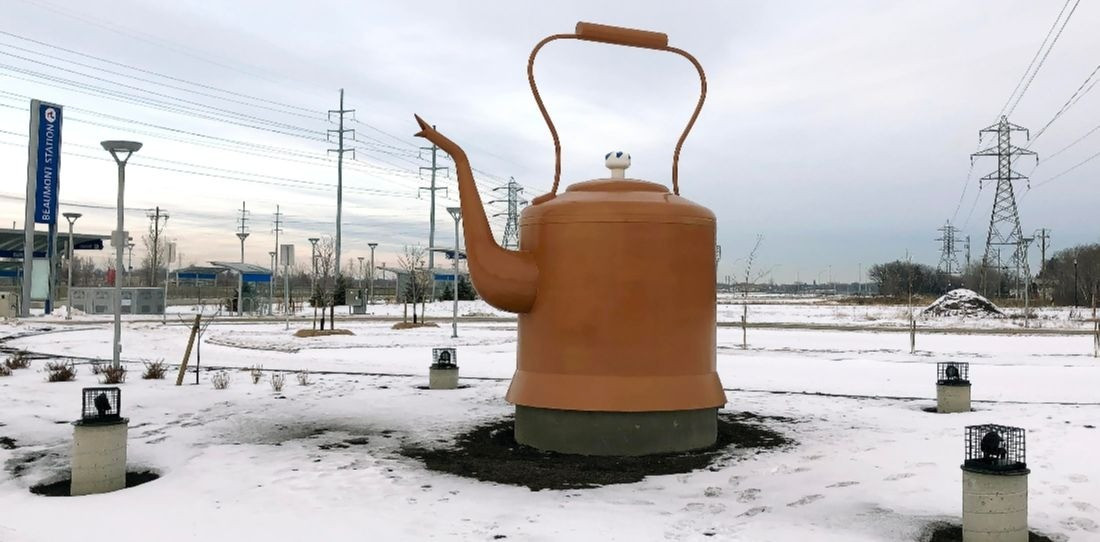Stories Left Untold
New public art explores Winnipeg’s Métis history
Winnipeg’s Métis history is being explored by new public art works. The works are part of an initiative, funded by the Winnipeg Arts Council (WAC) through the City of Winnipeg’s Public Art Program, to have a robust public art presence along the new transit line. Bill Burns and Ian August are among the artists who were commissioned to create pieces for the project.
August’s work, Rooster Town Kettle, marks the site of Rooster Town, a road allowance settlement that came into existence in 1901 and was dismantled by the city in the late 1950s to make room for Grant Park Shopping Centre and the expanding Fort Rouge neighbourhood. August learned about Rooster Town when he was conducting archival research and came across old newspaper articles portraying Métis communities in a negative light.
“After the Red River Rebellion, Métis people didn’t receive any of the land they had been promised via legislature,” August says, which ultimately resulted in these communities “squatting” on provincial road allowances.
August explains that “the city didn’t charge property tax, because they would be on the hook to provide services like water and sewage ... All the photos of Rooster Town depict people collecting water, which was a daily issue.”
“The kids in Rooster Town went to Winnipeg schools, and parents instructed children not to touch kids from the road allowance, because they were ‘dirty,’” August says, noting that the negative press was clearly intended to eradicate public sympathy and pave the way for the eviction of the community. “Newspaper articles only told one side of it. It was a real community, and folks had nice times raising their families. Many lived there for several decades”.
The Rooster Town Kettle commemorates this community, providing both a commentary about historical and current human rights issues regarding the availability of clean water within Indigenous communities, while also nodding towards Métis hospitality, in which tea has always played a starring role.
Burns, a prairie artist currently residing in Toronto, wanted to create a piece for the transit line based on his interest in site-sensitive projects that take a historical and geographical perspective.
“In Winnipeg, I looked at the history of pre- and post-contact trade and found that the Red River confluence was a place where things like the grease trade from the West Coast existed,” Burns says. He also notes that salt, sugar beet and honey production have been parts of Manitoba’s trading history.
Salt Fat Sugar Your Water is Safe, which Burns describes as “concrete poetry,” is “pointing to a disparity in our culture where many people don’t have safe water, which is dead wrong in one of the wealthiest societies in the world.”
Part of Burns’ art practice is “looking at the way we organize our industrialized world ... When I arrive in small villages or towns in the North, what usually happens is that I am given a gift of caribou meat by elders as a welcome gift. It got me interested in what trade is and what giving is. What I found up North is that gifts have a different significance. There is no agenda.”
The City is currently considering reducing the Public Art Allocation to $200,000 and eliminating it from the budget all together in 2021. Please write to your city councillor if you feel our city benefits from public art. Contact information can be found at winnipeg.ca/council/contact.stm
Published in Volume 74, Number 15 of The Uniter (January 23, 2020)







